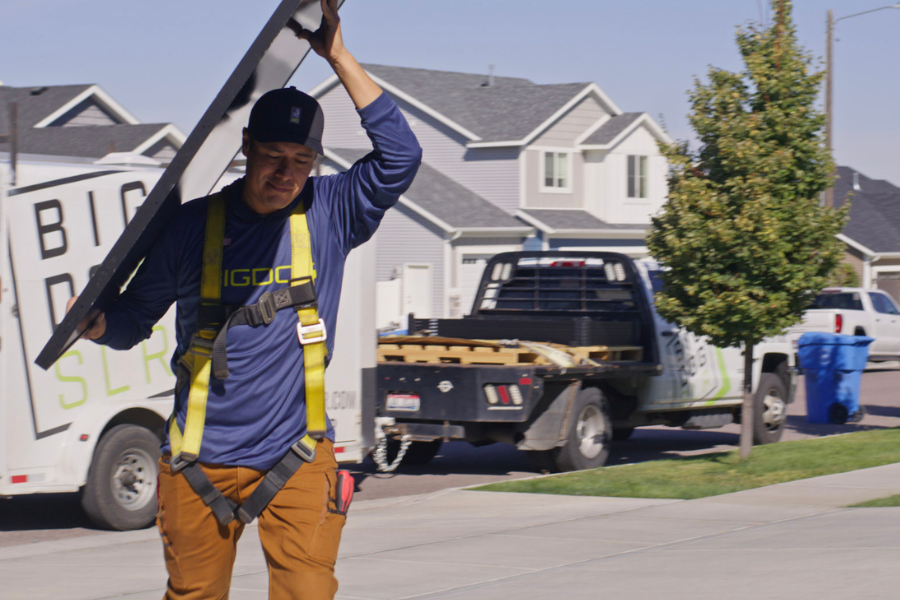Big Dog Solar: Our Locations and Solar Energy Statistics
Big Dog Solar Energy serves two countries with its seven total locations, and Big Dog continues to grow! Learn more about the solar energy industry in all of our locations to see how we can best help you save money on your electric bill. Thanks to information from the Solar Energy Industries Association (SEIA), all data for America below is current as of July, August and September of 2019 (Q3 2019).
Colorado
Big Dog has a location in Grand Junction, Colorado.
According to SEIA, “Colorado, with over 300 sunny days per year, has tremendous solar potential and was one of the first states in the U.S. to have a Renewable Energy Standard. There are multiple solar programs in Colorado for rooftop solar, community solar and utility-scale solar.”
Colorado ranks 12th nationwide, with 1,301.33 MW of installed solar energy. The $3.5 billion invested in Colorado can power 265,060 homes. That’s 3.14% of the state’s total electricity, comprised of 62,042 installations.
Solar prices have fallen 36% over the past five years. Colorado’s solar capacity is expected to grow by 2,756 MW over the next five years. As of Q3, 6,847 individuals were employed in the solar energy industry.
Idaho
Big Dog Solar energy has 3 locations in southeast Idaho: Rexburg, Ammon and Pocatello. It ranks 21st nationwide in solar energy installations, with 494.49 MW of energy installed. That’s enough to power 65,257 homes. Solar panel prices have fallen 36% over the past five years and residential solar home system installations have steadily increased. Of all the state’s used electricity, 3.45% comes from solar energy.
In Q3 2019, there were 557 jobs in the solar industry. That’s projected to increase, as well. Over the next five years, 399 MW of energy is anticipated to be added to Idaho’s solar capacity.
Related post: How to Choose Solar Company
Iowa
Big Dog Solar energy is located in Cedar Rapids, Iowa. The 101.92 MW installed in Iowa is enough to power 12,569 homes. It ranks 38th nationwide, and more than $223.86 million has been spent on solar installations.
Prices have fallen by 36% over the past five years, and 485 MW of energy is anticipated to be added in the next five. Currently, over 844 work in the industry and have helped with the 4,462 installations state-wide.
Puerto Rico
As of December 2018, Puerto Rico had 278 MW of solar energy, accounting for 1% of the island’s electric generation. Solar energy is Puerto Rico’s fastest-growing renewable energy source, continually increasing since 2015.The nation is also home to the largest solar photovoltaic (PV) facility in the Caribbean. This facility, Oriana, has a 45 MW capacity, and accounted for more than half of the nation’s solar energy when constructed in 2016.
Much of Puerto Rico’s solar and sustainable energy advancements comes from PREPA, or, Puerto Rico's Electric Power Authority.
In accordance with PREPA,there’s also a recent “law in Puerto Rico that sets an ambitious timetable for the shift to renewables, including solar. It calls for the island to receive half of its power from renewable sources by 2035. And to be using 100 percent renewable energy by 2050.”
Related post: Alternate Energy Solution
Q&A
What is the solar energy capacity in Colorado, and how does it compare nationally?
Colorado ranks 12th nationwide with 1,301.33 MW of installed solar energy, which powers approximately 265,060 homes. The state has invested $3.5 billion in solar energy, and its solar capacity is expected to grow by an additional 2,756 MW over the next five years.
How does Idaho’s solar energy landscape look, and what is its projected growth?
Idaho ranks 21st in the nation with 494.49 MW of installed solar energy, sufficient to power around 65,257 homes. Solar panel prices have decreased by 36% over the past five years, and Idaho is projected to add 399 MW to its solar capacity in the next five years.
What are the solar energy statistics for Iowa, and how is the industry performing there?
Iowa ranks 38th nationwide with 101.92 MW of installed solar energy, powering about 12,569 homes. The state has invested over $223.86 million in solar installations. Solar prices have fallen by 36% over the past five years, and the state expects to add 485 MW of solar energy in the next five years, with over 844 individuals currently employed in the industry.
What are the solar energy achievements and goals for Puerto Rico?
As of December 2018, Puerto Rico had 278 MW of solar energy, which accounts for 1% of the island’s electricity generation. The island is home to the largest solar PV facility in the Caribbean, Oriana, with a 45 MW capacity. Puerto Rico aims to achieve 50% of its power from renewable sources by 2035 and 100% renewable energy by 2050, as outlined by the Puerto Rico Electric Power Authority (PREPA).




.png)








